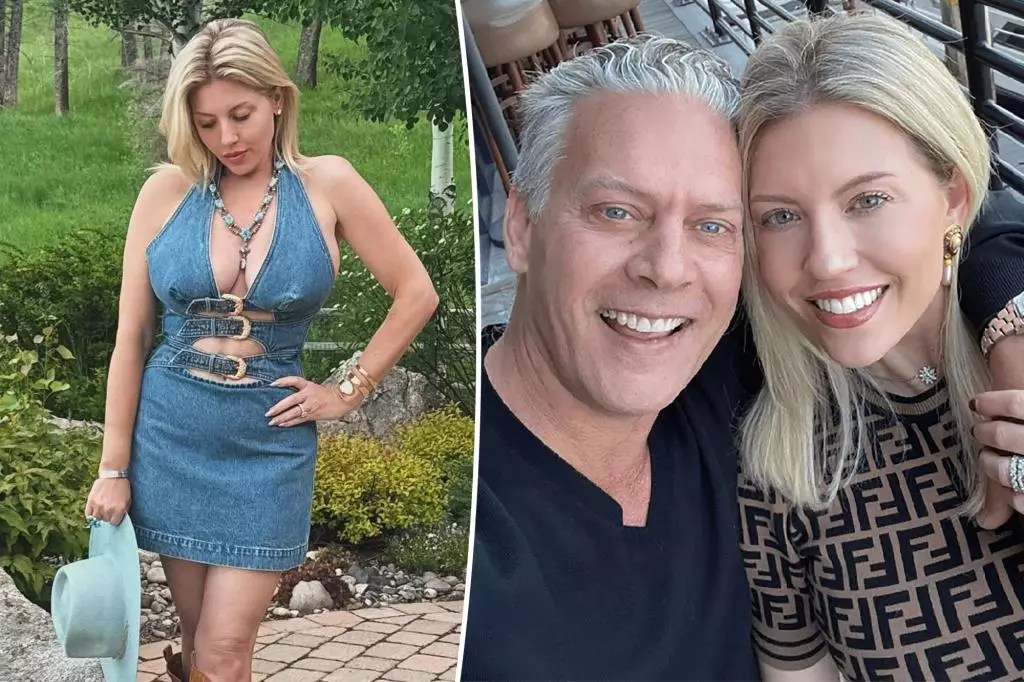In an era where personal lives are displayed on a grand stage and scrutinized by the public, the tumultuous saga of David and Lesley Beador exemplifies how personal conflicts can become Public Spectacles. Their ongoing legal disputes illuminate the darker side of relationships that policymakers, media, and society often overlook—the element of unresolved trauma, betrayal, and conflicting narratives. Both parties have laid claim to victimhood, each painting a picture of abuse and manipulation that challenges the straightforward narratives often broadcasted in the media. This situation underscores the importance of approaching such cases with a nuanced understanding rather than jumping to conclusions based on partial information.
Despite the public nature of their disputes, what remains most striking is the profound emotional and psychological toll that these accusations inflict—not just on the individuals involved but also on their children. The legal maneuvering appears to serve dual purposes: establishing boundaries and attempting to control the narrative. While courts have issued restraining orders and ordered separation, the underlying issues seem rooted in deeper emotional wounds that neither party has fully addressed. The push and pull between victim and aggressor, truth and perception, serve as a stark reminder of how fragile human relations can be, especially under the weight of fame and legal scrutiny.
The Fragility of Trust and the Impact of Power Dynamics
At the heart of this dispute lies a clash of trust, perception, and power—elements that are often corrupted or distorted in relationships punctuated by financial dependence and emotional vulnerability. David’s allegations of physical violence and accusations of manipulative behavior point to a breakdown in basic trust and mutual respect. His claim that Lesley married him primarily for wealth reveals a profound suspicion that deeply undermines any remaining foundation of their relationship.
Lesley’s counterclaims paint a starkly different picture: one of verbal abuse, harassment, and relentless fear. Her assertion that David’s “meltdowns” threaten her and her children highlights the disruptive and potentially hazardous environment she perceives. When both partners accuse each other of misconduct, it becomes apparent that the power dynamics are complex and deeply rooted in individual insecurities, unmet needs, and perhaps unresolved trauma from prior relationships or personal histories.
The legal actions—restraining orders and custody restrictions—serve as external manifestations of these internal conflicts. They threaten to permanently alter the familial landscape, adding yet another layer of complexity. It’s difficult to ascertain the truth without losing sight of the human element: children caught in the crossfire, adults deeply wounded, and the apparent inability to find mutually respectful coexistence.
Media’s Role in Shaping Public Perception of Private Struggles
The media coverage surrounding the Beador case—or any celebrity-related dispute—inevitably influences public perception. While transparency is essential, the danger of sensationalism cannot be overstated. The portrayal of Lesley as a “pathological liar” and David’s accusations of her marrying for money risk turning into stereotypes that overshadow the nuanced reality. Public scrutiny tends to simplify human conflicts into clear-cut narratives—either villain or victim—ignoring the complexity of human psychology and emotion.
Moreover, the public’s fascination with celebrity disputes often magnifies the stakes, turning personal suffering into national entertainment. This raises questions about privacy, empathy, and responsibility. Are we as a society enabling a culture of voyeurism, or are we compelled to seek out the truth in chaotic and emotionally charged situations? The danger lies in rushing to judgment without comprehensively understanding the intricacies at play, thus risking unjustly condemning one party or perpetuating harmful stereotypes.
A Call for Compassion and Responsibility in Handling Personal Disputes
Even amid these allegations and counter-allegations, the core issue should arguably be one of compassion and responsibility. Both David and Lesley demonstrate how pain, fear, and anger can distort perceptions and behaviors, especially when intertwined with issues of finances and parental responsibilities. Their story serves as a stark reminder that behind the headlines are real people, profoundly affected by their circumstances.
It’s crucial for the broader community—be it legal institutions, media outlets, or casual observers—to acknowledge the complexity of such issues and to advocate for sensitivity. Justice should prioritize safety, truth, and the well-being of children involved, rather than simply serving as a battleground for accusations of economic manipulation or emotional abuse. The lesson here is that at the heart of every conflict lies a need for understanding, healing, and ultimately, accountability—something that, in this case, seems elusive given the current state of legal wrangling and public commentary.







Leave a Reply